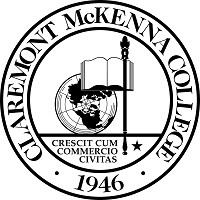
دانلود رایگان پایان نامه تبعیض جغرافیایی بانکداری در ایالت متحده
چکیده
سپاسگزاریها
I. مقدمه
II. ادبیات قبلی در مورد دسترسی به اعتبار و توزیع ثروت
III. مدل
IV. نتایج
V. بررسی های استحکام
VI. بحث
VII. نتیجه گیری
IX. ضمیمه
منابع
چکیده پایان نامه
موسسات مالی در ایالات متحده از لحاظ تاریخی به طرق مختلف علیه سیاهپوستان آمریکایی تبعیض قائل شده اند. یکی از پویاییهای بالقوه دسترسی نابرابر که هنوز مورد مطالعه قرار نگرفته، ماهیت جغرافیایی است. یعنی آیا بانکهای تجاری کمتر در محلههایی قرار میگیرند که سیاهپوستان بیشتری دارند؟ با استفاده از اثرات ثابت و انتخاب بر روی مدل مشاهده پذیر، متوجه شدم که افزایش 1 درصدی در جمعیت سیاه پوست یک منطقه با کاهش 0.11 در تعداد بانک های تجاری در آن منطقه مرتبط است. این اثر عمدتاً در مناطق شهری، به ویژه در شهرهای مناطق اقیانوس اطلس میانه، غرب میانه بالا و سواحل اقیانوس آرام محلی است. من همچنین دریافتم که این اختلاف بین محلههای سفیدتر و سیاهپوستان از سال 2000 معکوس شده و بیشتر شده است. تا سال 2020، افزایش جمعیت سیاهپوستان به همان اندازه به 0.14 درصد کمتر بانکها مربوط میشود. این نتایج نشان می دهد که بسته شدن بانک ها و جابجایی ها پس از رکود بزرگ به طور نامتناسبی بر محله های سیاه پوست تأثیر گذاشته است. به طور گستردهتر، سیاستگذاران باید دامنه تبعیضهای بانکی را گسترش دهند، حتی اگر نتایج من یک نسخه سیاستی خاص را نشان ندهد که بتواند این نابرابری را خنثی کند.
ABSTRACT OF DISSERTATION
Financial institutions in the United States have historically discriminated against Black Americans in a multitude of ways. One potential dynamic of unequal access that remains understudied is geographic in nature. That is, are commercial banks less likely to locate in neighborhoods with more Black people? Using a fixed effects and selection on observables model, I find that a 1 percentage point increase in an area’s Black population is related to a 0.11 decrease in the number of commercial banks in that area. This effect is localized primarily in urban areas, particularly in cities in the Mid-Atlantic, Upper Midwest, and Pacific Coast regions. I also find that this disparity between whiter and Blacker neighborhoods has reversed and widened since 2000. In 2000, a 1 percentage point increase in an area’s Black population was associated with 0.19 more banks; by 2020, an increase in the Black population of the same magnitude was related to 0.14 percent fewer banks. These results suggest that bank closures and relocations in the aftermath of the Great Recession disproportionately affected Black neighborhoods. More broadly, policymakers should expand the scope of what banking discrimination entails, even if my results do not reveal a specific policy prescription that could undo this disparity.
ABSTRACT
Acknowledgements
I. Introduction
II. Previous Literature on Access to Credit and Wealth Distribution
III. Model
IV. Results
V. Robustness Checks
VI. Discussion
VII. Conclusion
VIII. Appendix
IX. References
